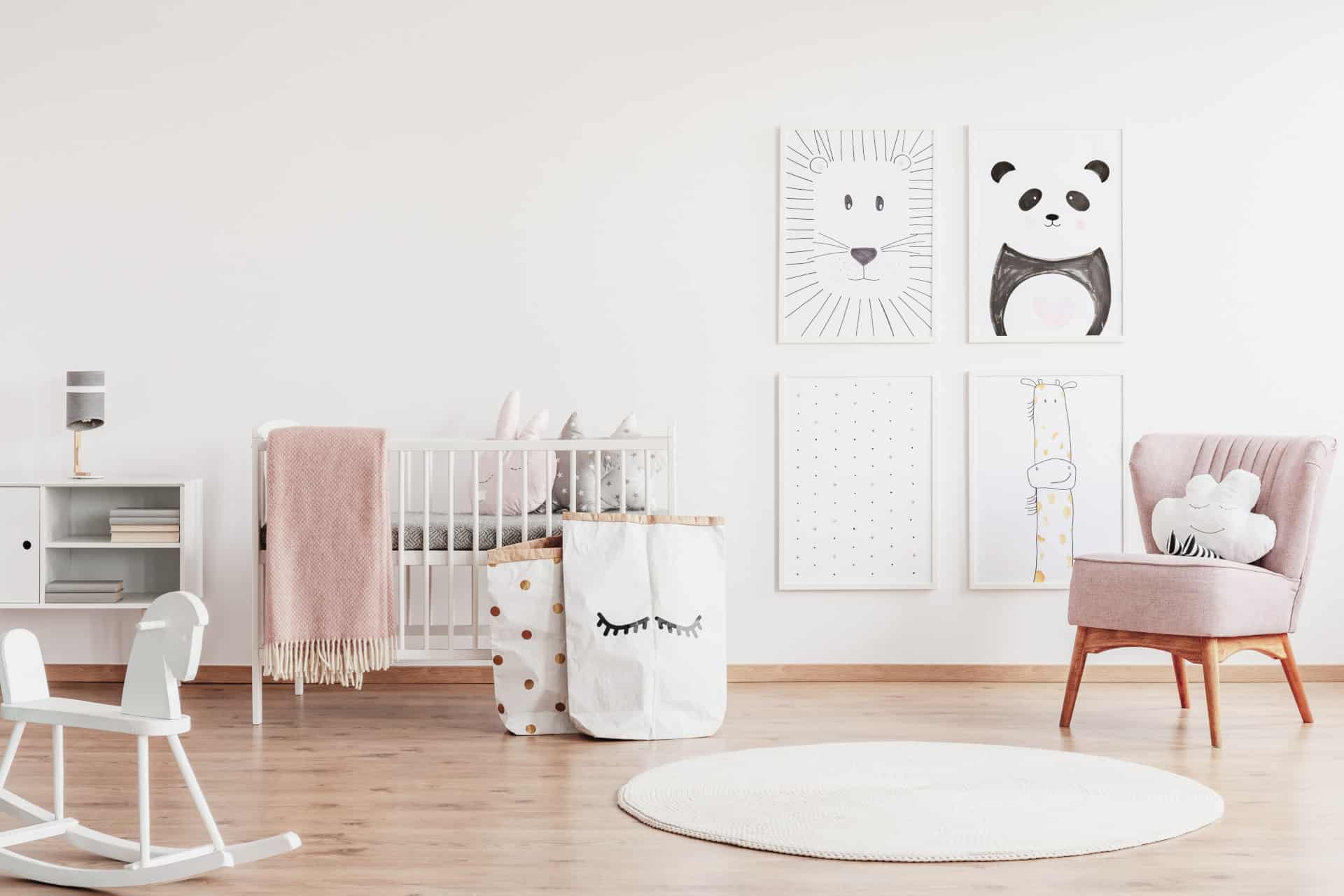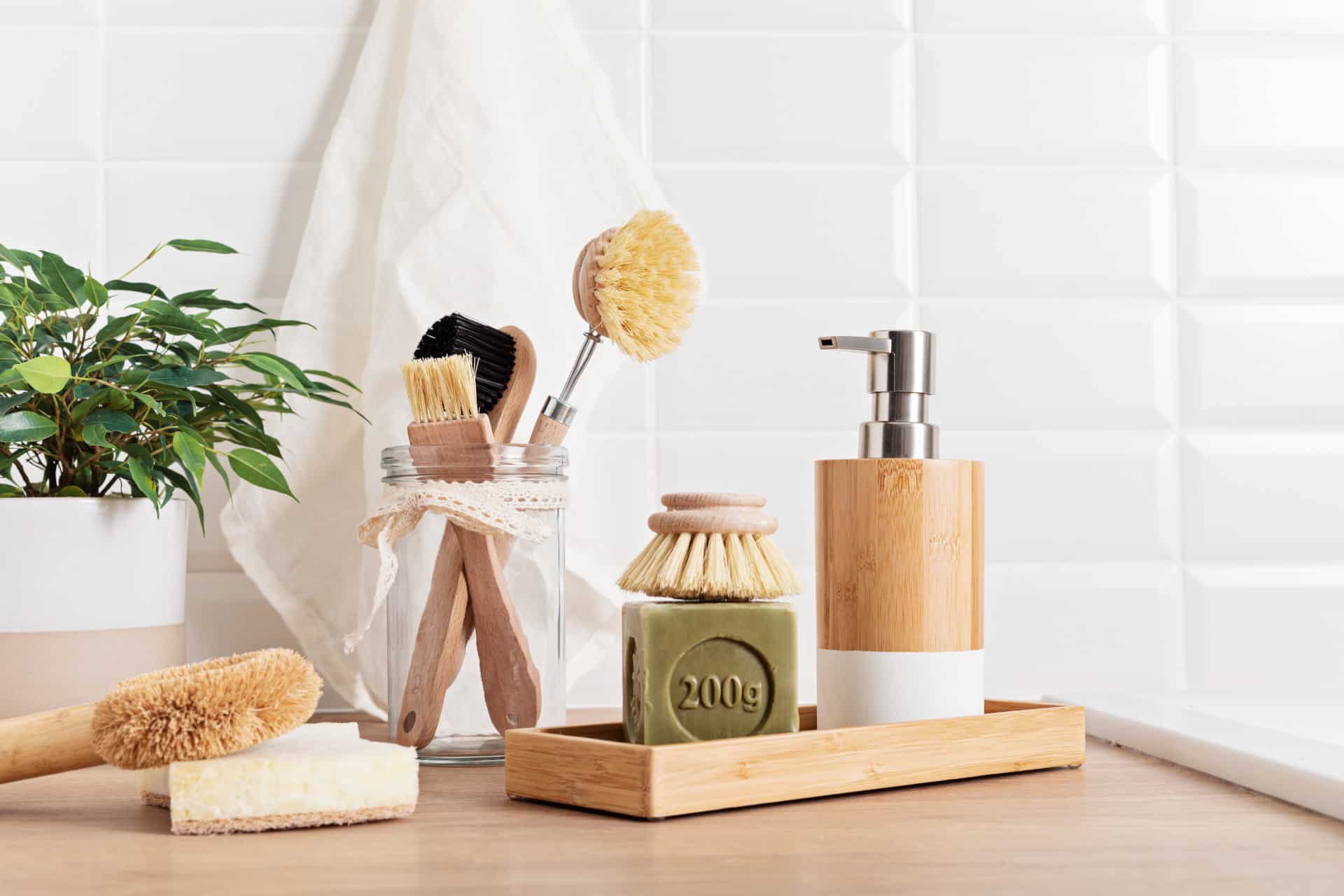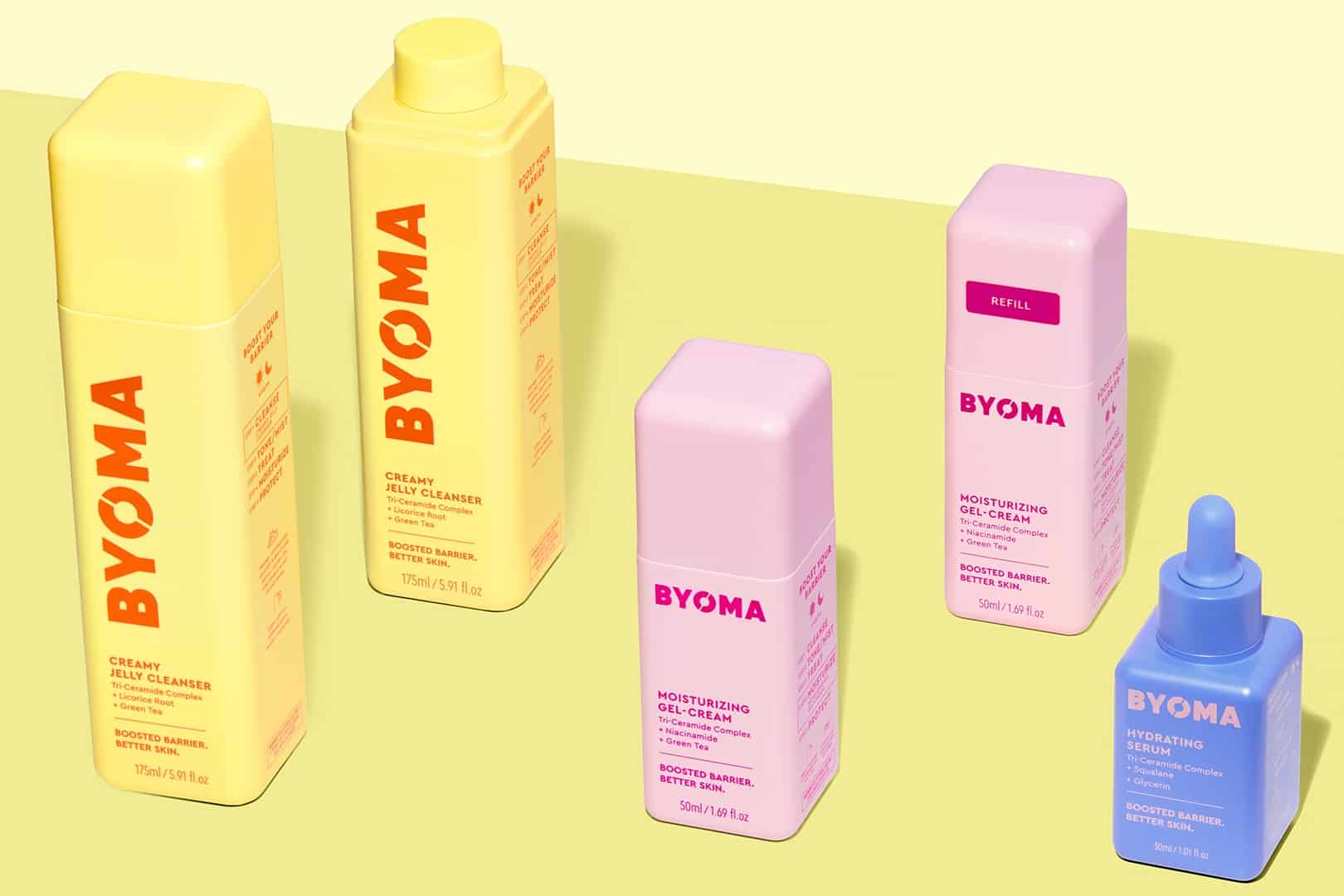How to Create The Ideal Non-Toxic Baby Nursery

Putting together a baby nursery is one of the great joys many parents have when inviting a new baby into the home. If you’re looking to create the ideal non-toxic baby nursery, here’s what you should know.
In a clean and conscious living journey, it’s important to detox every room of the home, but if you have a nursery, it’s the most important place to start.
While most rooms of the home can have objects that contain iffy chemicals, infants are more affected by them than grown adults are, making it very important to ensure all of the products in the nursery are safe to use.
Product Swaps
The following items are common nursery products most people will have in their home. They’re all important to pay attention to, and some of them might be ones you wouldn’t expect.
Diapers
Many diapers are made from synthetic materials like plastics, are heavily bleached to maintain whiteness, have artificial fragrances, mysterious lotions, and more. The diaper area is one of the most sensitive areas on a baby’s body, and having a non-toxic diaper is a good idea.
The solution: There are two potential solutions here: cloth diapers, or organic disposables. It’s understandable that many parents don’t want to deal with washing poopy cloth diapers, so organic disposable diapers are a good option for most.
Diaper Rash Cream
When your little one gets a diaper rash, most parents will rush to get a cream to help relieve some of the pain and irritation on baby’s little bottom. Unfortunately, as you might expect, many diaper creams are full of synthetic ingredients that should be nowhere near the diaper area, such as petroleum jelly.
The solution: An organic and natural baby balm is the key here. A good organic balm avoids the iffy ingredients and soothes and relieves diaper rashes with only natural ingredients.
Baby Wipes
Baby wipes are a convenient way to clean up messes (and bums), and most parents have them in their baby nursery arsenal. Unfortunately, most baby wipes on the market are full of synthetic chemicals which can not only be irritating, but might have unknown effects on a baby’s sensitive diaper area.
The solution: Non-toxic baby wipes made with natural and safe ingredients are the safest bet.
Cribs
You might be wondering how a crib might be contributing toxins to the home. Cribs made with solid wood are better than those that aren’t, because otherwise they can be full of toxic glues, veneers, formaldehyde, and more. They might also use paints with VOCs (volatile organic compounds) and some furniture made in Asia has been found to contain led.
The solution: A GREENGUARD Gold certified crib has to meet strict standards for indoor air quality and chemical composition.
Crib Mattress
Much like adult mattresses, crib mattresses are sprayed with toxic flame retardant chemicals so that they meet federal fire safety regulations. Because babies can sleep up to 20+ hours a day as newborns, having a safe and chemical-free mattress is crucial.
There is also evidence that traditional mattresses with PVC covers can contribute to SIDS (sudden infant death syndrome.) An Australian study hypothesized that the flame retardant chemicals in mattresses combined with a common fungus that grows in mattresses could create a poisonous gas.
The solution: An organic crib mattress uses materials like wool, which is flame retardant by nature, and avoids the toxic chemicals and PVC.
Crib Sheets
Most crib sheets are made from either polyester (which isn’t breathable) or non-organic cotton, which is heavily treated with pesticides. There is also a human rights issue with non-organic cotton, as most of it is grown in poor countries where farmers are exposed to high amounts of toxic pesticides.
The solution: Organic cotton crib sheets are the answer here. There are some high quality, breathable and organic sheets that are perfect for a non-toxic baby nursery.
Nursery Paint
Painting the nursery in fun, pretty colors is one of the joys many parents love when bringing a new baby home. It’s important to know that traditional paints contain VOCs (volatile organic compounds), which are gasses that paint emits for years after its applied to walls. These VOCs can have unknown effects on the human body, which is even more important for a teeny tiny baby’s body.
The solution: Zero-VOC paints are readily available, which skip the chemicals that emit these potentially iffy compounds.
Baby Bottles
Although plastic baby bottles are cheaper than glass bottles, they have a few big downsides. First of all, plastic will scratch and wear down over time, meaning baby will ingest some of it. Second of all, micro scratches can accumulate bacteria that’s hard to clean out.
The solution: Glass baby bottles are the answer here. Not only is glass inert, meaning it can’t react with other chemicals and is 100% safe, but they’ll last a lot longer than plastic bottles.
In Conclusion
A lot of thought and care goes into creating a non-toxic nursery, but as long as you know what pitfalls to look out for, it’s not hard.




